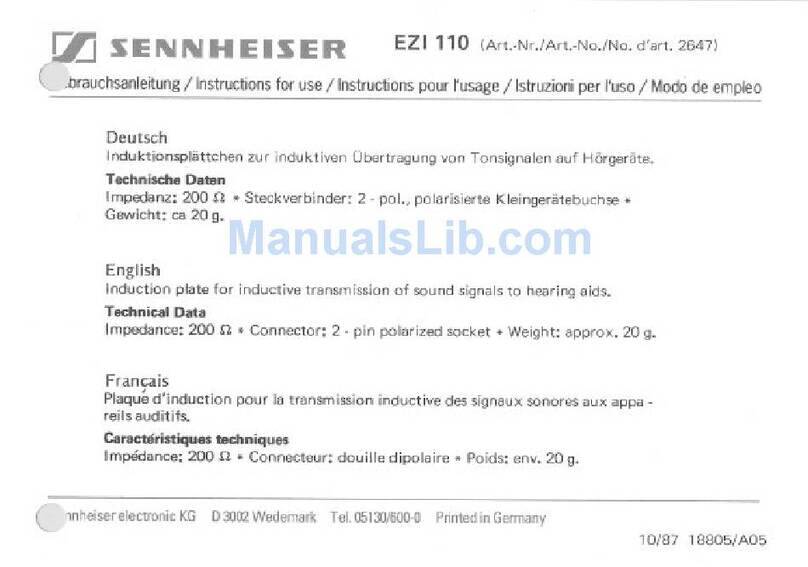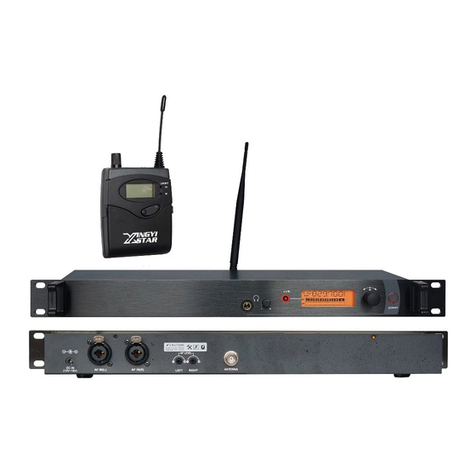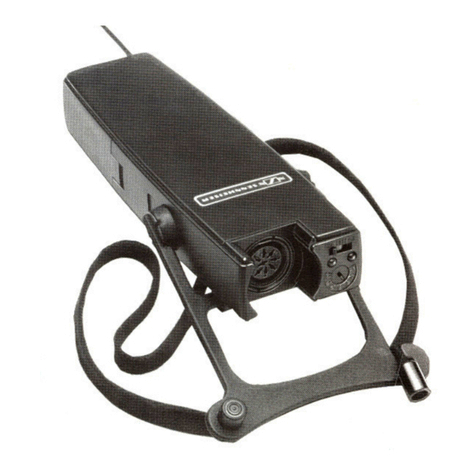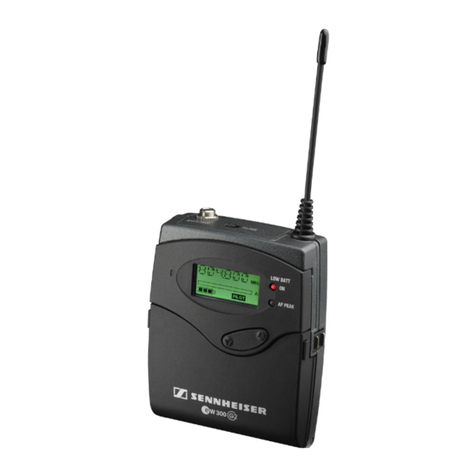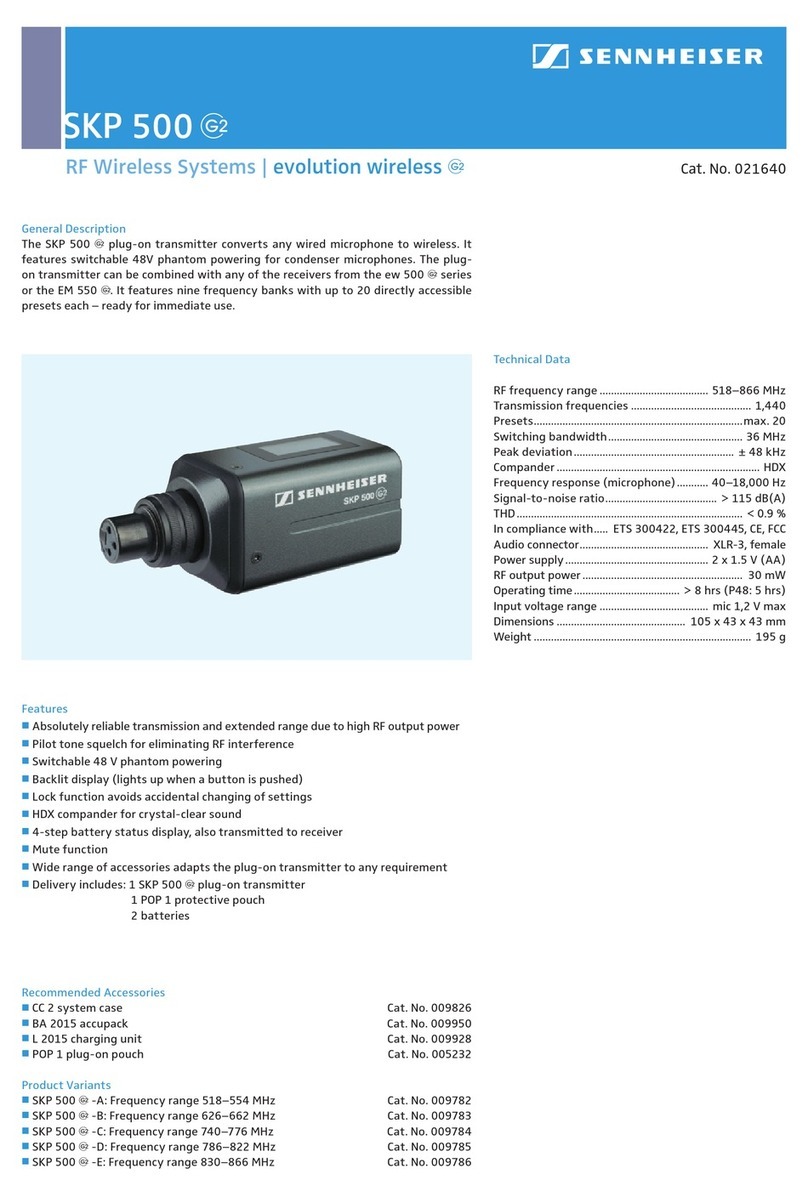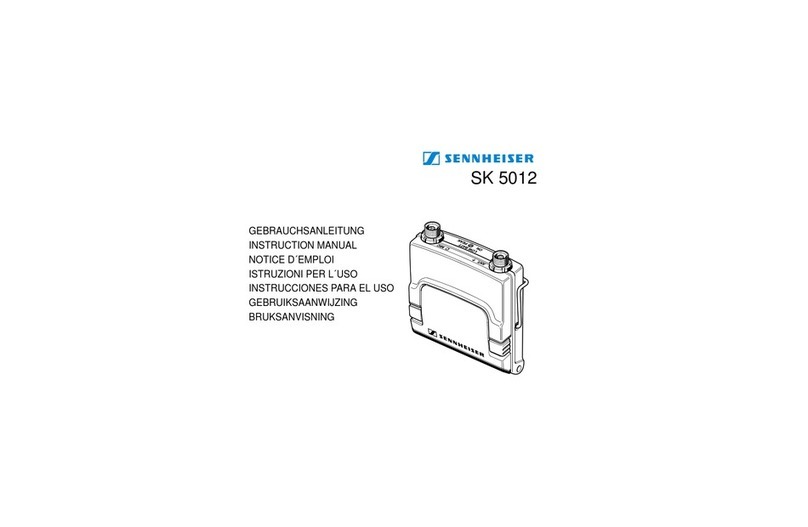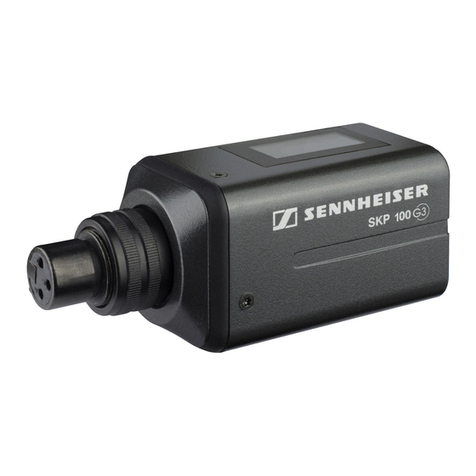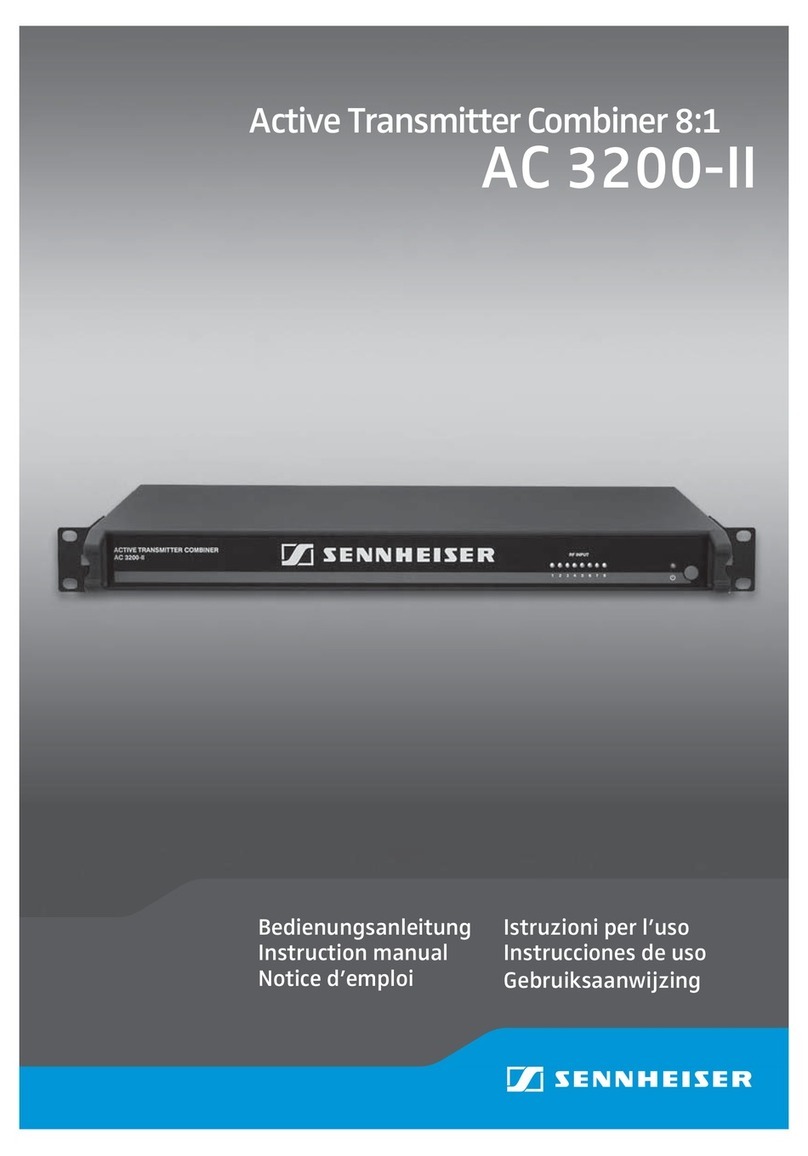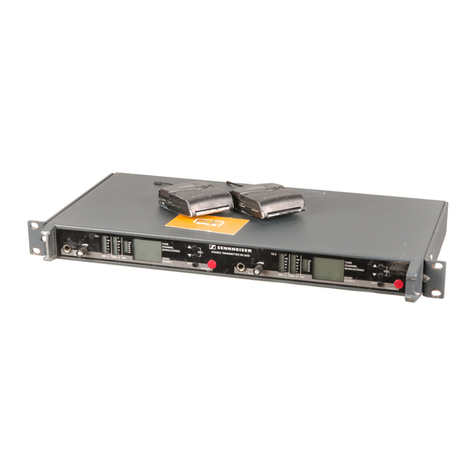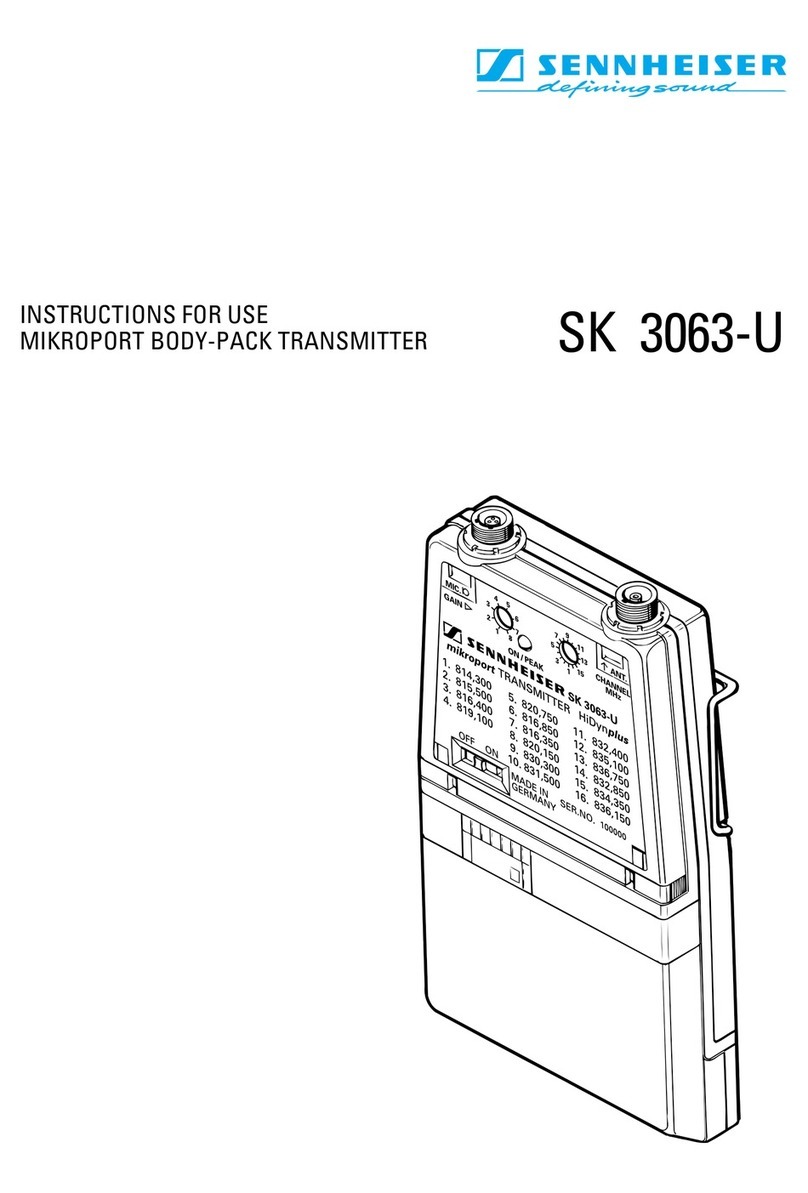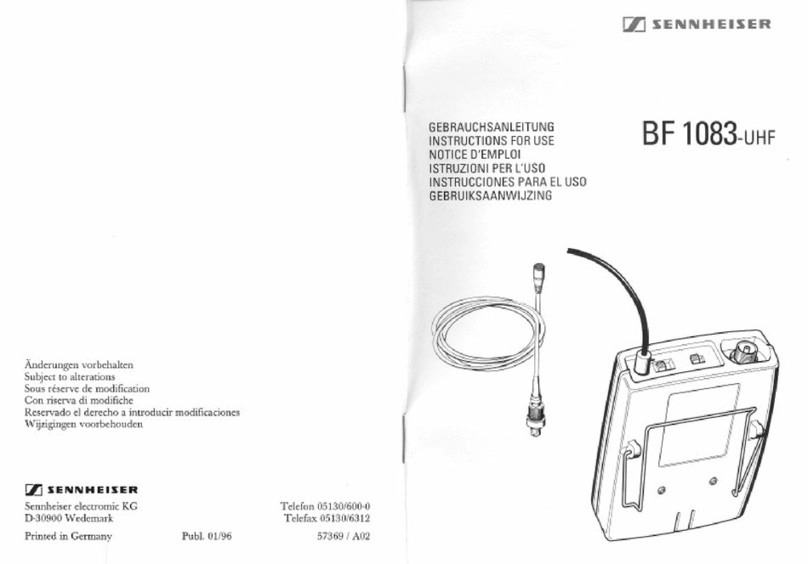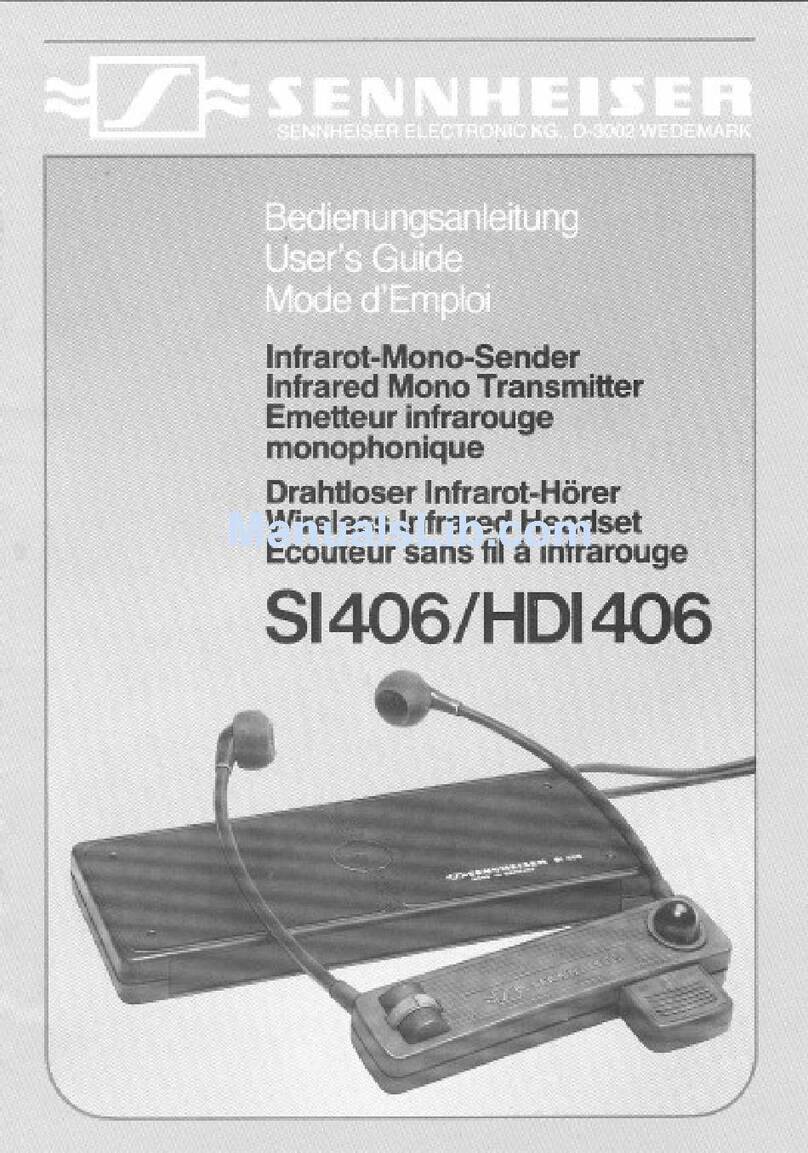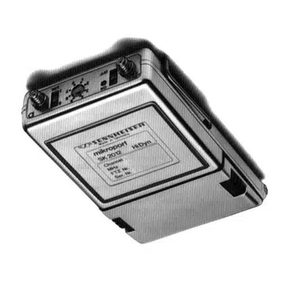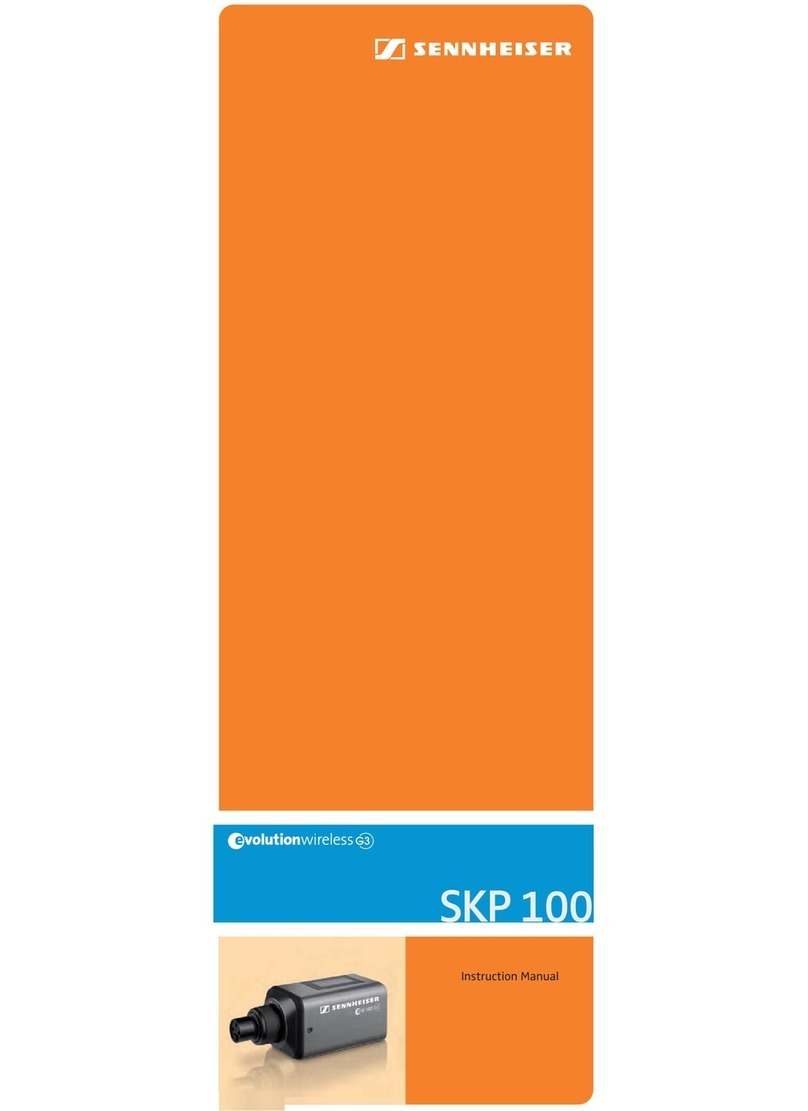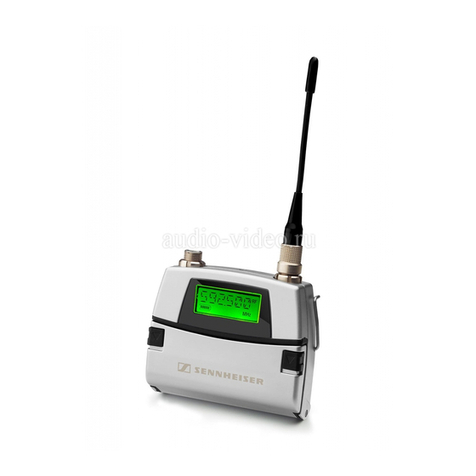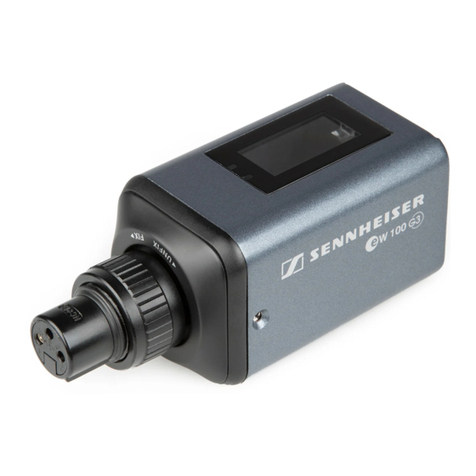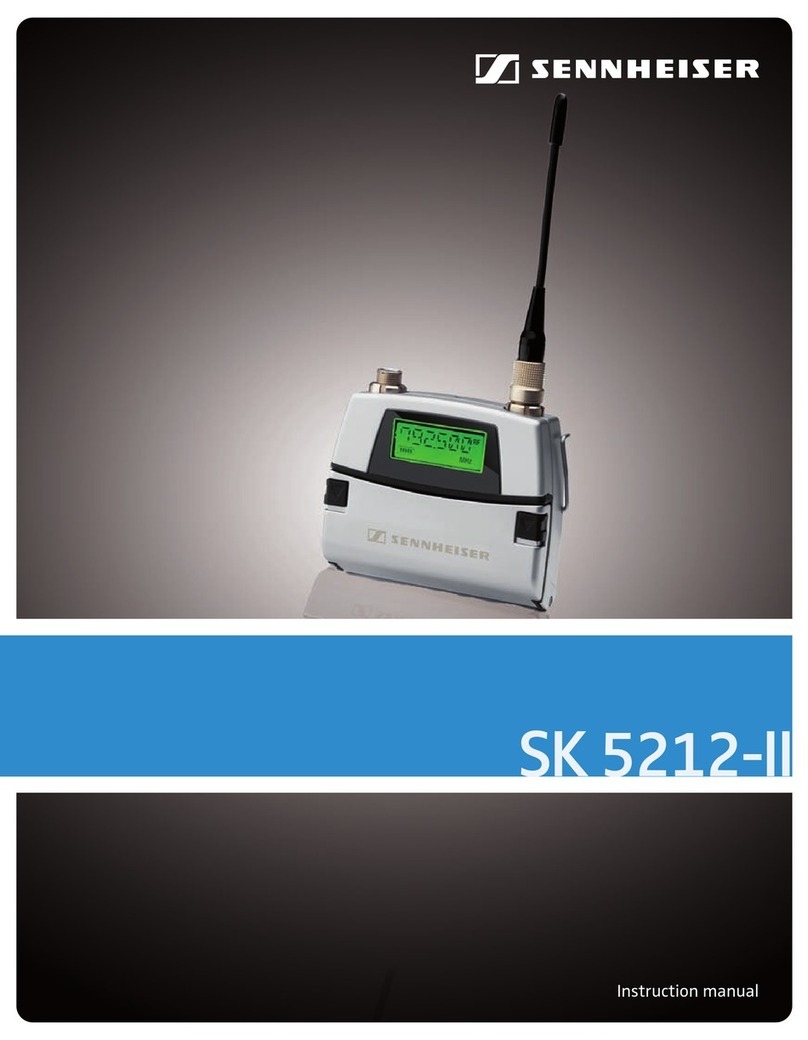
~C-3V ~1OKQ lJ'~300m~
Example
Adjusting sensitivity 01 microphone and line input
Under the cover (5) you will find a control (3) for the sensitivity of the microphone or line
input which works similar to the level control on a tape recorder (fig. 3a + 3b). Besides the
manual control the transmitter contains a limiter circuitry which reduces the input gain if a
certain threshold isexceeded (i. e. if the swing of the transm itter reaches.:!:.8 kHz). For sen-
sitivity adjustment proceed as foliows:
Switch on transmitter and receiver. Make sure that both sets are operating at the same fre-
quency. Turn the control (3) to its left stop. Speak into the microphone at normal voice.
Optimum results have in practice been reached by speaking a long "aaahh" into the micro-
phone. During this level check hold the transmitter in its normal operating position.
Listen to the signal at the receiver with a set of headphones while you speak into the mi-
crophone. Slowly increase gain until the volume ceases to rise. Now reduce the setting by a
quarter-turn.
Fastening neck strap and clip
The set is supplied with a neck strap and a clip for fastening the set to the body. The strap must
be attached to the slots shown in fig. 4 and 5. When fastening it must snap into place with an
aud ible click.
With the clip the transmitter can be easily attached to the waistband or belt (fig. 7). Since the
microphone MKE 2012 and MKE 4012 are not suitable for this kind of application a clip-on
microphone, e. g. MKE 2 R, MKE 10 R or MKE 40 R isto be used instead.
During operation avoid pressing the antenna against your body, touching it with your hand er
winding the microphone cable around it. Otherwise the radiated power would be reduced.
Operation with batteries or rechargeable batteries
The transmitter may be powered either by alkaline batteries, type Mignon IEC LR 6, or by
nickel cadmium accumulators (1.2 V / 500 mAhl. The preferred type of battery should be the
alkaline type, as other types of dry cells might not ensure reliable operation of the transmitter.
In frequent use of the transmitter nickel cadmium accumulators are more economical. The
SK 1013-6-1 features two lateral contacts (4) for recharging; so the batteries can remain in the
set while recharging them. Depending on the type of battery used, there are variations in operat-
ing time:
NiCd-accumu lators: approx. 10 hours
alkaline batteries: approx. 30 hours
Hints for operation on rechargeable batteries
1. Switch off the transmitter before recharging.
2. After use always put the transmitter into the charger. This will ensure that the accumulators
are at all times optimally charged.
6
r
Technical data
Carrier frequencies
Frequency stabil ity between - 1ooC and + 550C
and battery voltage deviation of + 10 % and - 30 % .:!:.2 kHz
RF-output into dummy load 10 mW
Rad iated power ~ 1 mW
Radiated spurious and harmonic frequencies ~ 4 nW
Modulation mode FM
Nominal swing .:!:.8kHz
S/N ratio at nominal swing and max. sensitivity typ. 68 dB (CCIR 468, peak)
typ. 82 dB (DIN 45500, curve A, rms)
1 frequency in the range of 30 to 45 MHz
Microphone input
AF-sensitivity (nominal swing) max. 3.5 mV (limiter threshold)
min. 70 mV (limiter threshold)
pin 1: AF
pin 2 + 3: ground
pin 8: DC-voltagefor supply of electret mi-
crophones
Wiring
Line input
Input impedance
AF-sensitivity (nominal swing)
approx. 220 kD
max. 70 mV (ljmiter threshold)
min. 1.5 V (limiter threshold)
approx. 26 dB
Adjustlng range of the level control
Control range oflimiter at
max. sensitivity
min. sensitivity
THD at nom. swing, 1000 Hz
AF-frequency response Ci.3 dB)
Roll-off above upper cut-off frequency
Preemphasis
Current consumption at 4.5 V
Power supply
Operating time
approx. 40 dB
approx. 20 dB
.:s1%
100 Hz to 10 kHz
18 dB/oct. (active lowpass filter)
50 ILS
approx. 35 mA
3 x 1.5 V battery (Mignon IEC LR 6)
approx. 30 h with alkaline batteries
approx. 10 h with NiCd-accumu lators
height: 100, with helical antenna: 185
width: 66
deoth: 38
200 9
Dimensions in mm
Weight (with batteries and microphone)
We reserve the right to alter specifications, in particular with regard to technical improvements.
7
--- -
